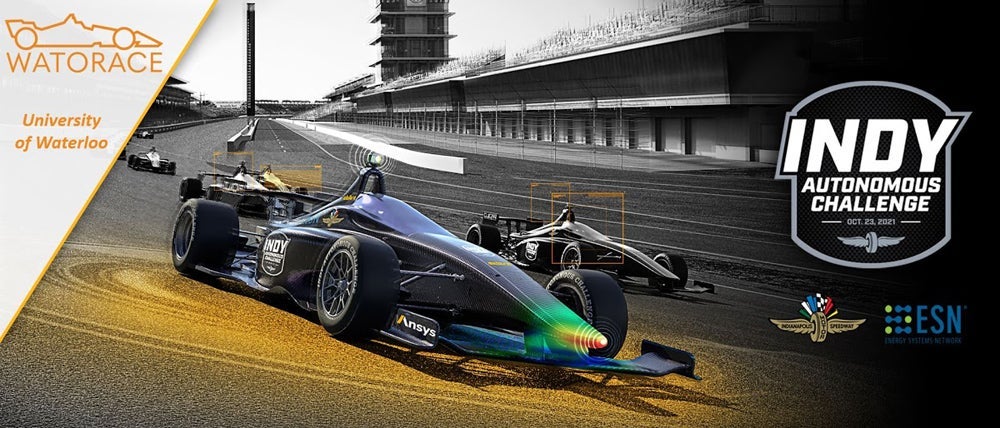WATORACE — including Cheriton School of Computer Science and Software Engineering students Kyle Anderson (SE), Sinclair Hudson (CS), Ryan Larkin (CS), Dmitry Tsarapkine (CS) and Ben Zhang (BCS’20) — won fourth place in the Indy Autonomous Challenge (IAC) virtual race #3, also capturing the Rising Star Award.
The IAC brings together 18 university teams from 11 countries on four continents in the world’s first head-to-head, high-speed autonomous race at the famous Indianapolis Motor Speedway. WATORACE is the only Canadian entry, proudly representing the University of Waterloo and Canada in this competition.

The IAC has a series of four virtual races before transitioning to the physical cars later in 2021. The virtual races take place in an ANSYS VRXperience simulator, which has a detailed model of both the IMS racetrack and the Dallara IL-15 open-wheel race car. The Dallara IL-15 is the official car of the Indy Lights racing series, and can reach speeds of up to 300 km/h. Clemson University is in the process of fitting Waterloo’s Dallara IL-15s with sensors and computers for use by the race teams when the challenge transitions to physical vehicles after the next virtual race.
Ryan Larkin, Sinclair Hudson, Dmitry Tsarapkine and Ben Zhang have been integrating and improving the steering and throttle controllers, implementing the software architecture that communicates with the simulator, analyzing the vehicle controller and executing race simulations, designing racing lines, as well as programming the vehicle to avoid blocking maneuvers from other cars.
The final virtual race is set to take place in May, and WATORACE is carrying over its momentum from the last race to try and claim the podium. While this will be no easy task, the team is determined to make its vehicle the fastest on the track. Succeeding in this competition will help to further Canada’s reputation as a leader in autonomous technologies.